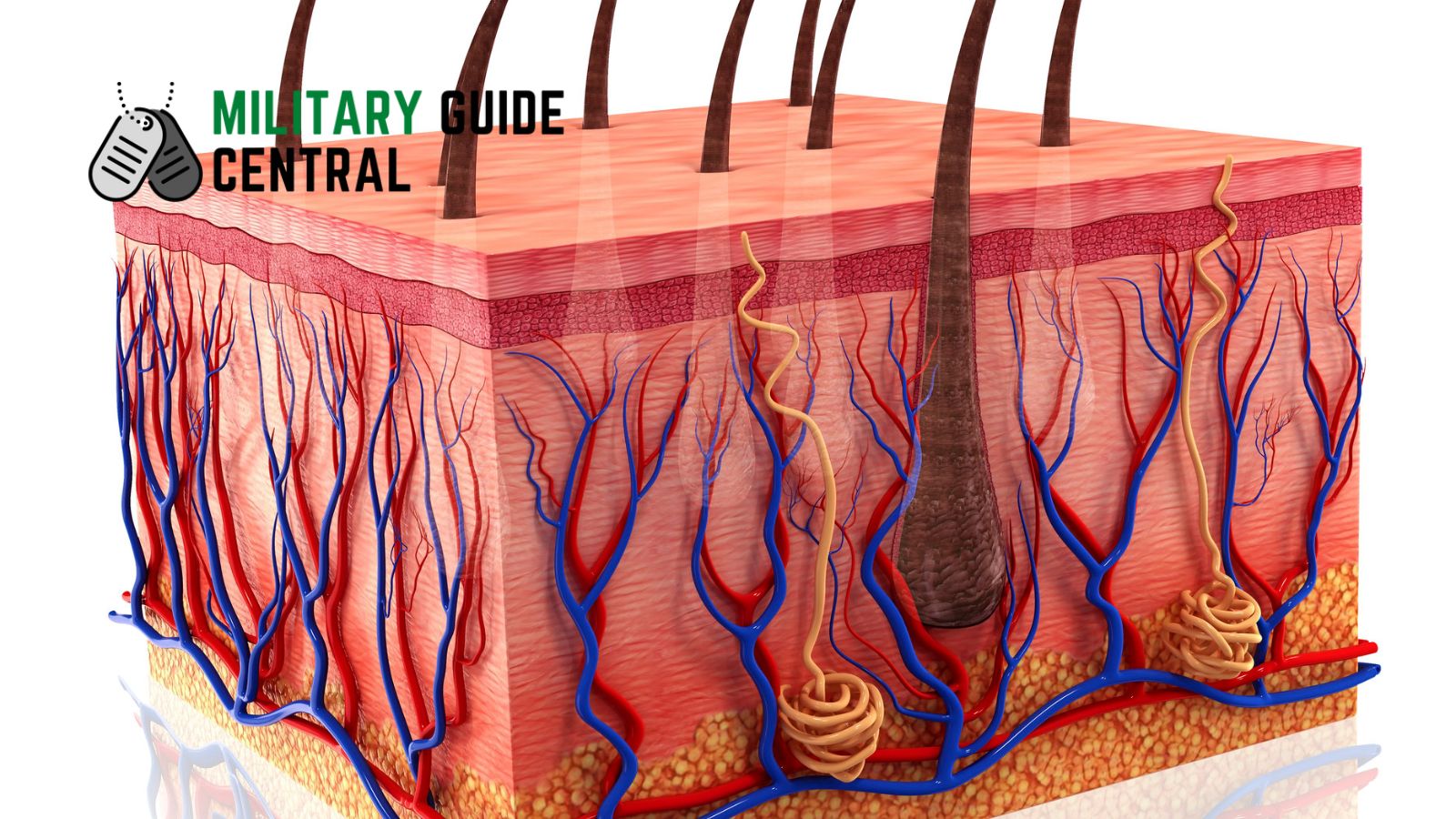Key takeaways
- The integumentary system is made up of the skin, hair follicles, sebaceous glands, and sweat glands.
- Skin serves as a protective barrier and helps regulate body temperature, among other functions.
- The skin has two main layers: the epidermis and the dermis.
- The dermis contains blood vessels, nerve fibers, smooth muscles, and skin appendages.
- Blood vessels in the dermis can expand and constrict, affecting body temperature and blood pressure.
- Nerve fibers in the skin carry impulses to and from the brain.
- Smooth muscles in the dermis control the size of the skin’s exposed surface.
- Appendages of the skin include hair, nails, sebaceous glands, and ceruminous glands.
- Sweat glands release perspiration to regulate body temperature.
- Ceruminous glands are specialized sweat glands found only in the auditory canal, secreting cerumen to protect the eardrum.
To put it another way, organ systems include clusters of organs with similar functions, as well as groups of organs that serve specialized purposes. The integumentary system is made up of the skin, hair follicles, sebaceous glands, and sweat glands.
Skin function
Almost every visible aspect of the human body is covered in skin. It has even spawned offshoots like hair and nails. Many sensory nerves have their peripheral terminals in the skin, and it has limited excretory and absorbing powers. The skin also protects the underlying structures from injury and invasion by alien organisms. In addition to controlling body temperature, the skin performs a vital role in protecting us from the elements. The skin also acts as a waterproof barrier, keeping the body from losing too much water even in extremely dry weather.
Skin structure
Epidermis and dermis, as well as supporting structures and appendages, make up the integument (skin).
Epidermis
The outermost layer of the skin is known as the epidermis. It’s made up of epithelial cells that are stiff and flat, like scales. The stratum corneum, stratum lucidum (which is not always present), stratum granulosum, stratum spinosum, and stratum basale are the five sub-layers or strata of epidermal cells that have been found, listed from superficial to deep.
Dermis
True skin, also known as the dermis, is located underneath the epidermis and gradually merges with the underlying tissues. Blood arteries, nerve fibers, smooth muscles, and skin appendages are all part of the fascia.
Blood vessels
The dermal blood arteries can expand to hold a large amount of the body’s blood supply when dilatable.
The body’s principal temperature-regulating mechanism is comprised of this ability plus the activity of the sweat glands. Blood pressure and the amount of blood available to internal organs are both affected by the constriction or dilatation of these blood arteries.
Nerve fibers
Motor and sensory nerve fibers are found in the skin, and they carry impulses to and from the brain. Smooth muscles in the dermis, sweat glands, and hair roots receive nerve fibers from the dermis’ artery walls and the dermis’ sweat glands.
Dermal muscles and glands get signals from motor nerve fibers, while sensory receptors send signals to sensory nerve fibers (i.e., detecting touch). It is the job of both nerve fibers to communicate with the brain about what is happening outside of it.
Smooth muscles
The dermis contains smooth involuntary muscles. They’re in charge of keeping an eye on the size of the skin’s exposed surface. These muscles, when dilated, expose the most skin surface area, which aids in heat dissipation. Constriction reduces the amount of skin exposed, which reduces the amount of heat that may be radiated. Shivering, or repeated muscle contractions, can also quickly generate heat in the body.
Skin appendages
Appendages of the skin include hairs and nails as well as the sebaceous and ceruminous glands, which are located in the dermis.
Nails
The dorsal surfaces of the fingers and toes have nails made of horny epidermal scales. They serve to safeguard the digits’ many, highly sensitive nerve endings. The epithelium of the nail bed is where new nail growth occurs. The entire nail grows in length as it is created.
Hair
Every portion of the human body’s exterior, including the hair, contains an epithelial structure called hair. The type of melanin present determines the color. Both the root and the shaft of hair are present in each strand of hair. The hair follicle is a pit-like depression where the root of the plant is located. The root cells divide to produce new hair follicles. Cold or fright activates the arrector, a tiny muscle attached to the side of the follicle, resulting in the formation of gooseflesh (goosebumps) on the skin. There are two or more sebaceous glands connected with each hair follicle.
Sebaceous glands
The soles of the feet and the palms of the hands are the only places on the body where sebaceous glands are absent. To maintain the skin and hair soft and malleable and to keep bacteria at bay, their ducts enter into the hair follicles most frequently. They release an oily material.
Sweat glands
You’ll find sweat glands just about everywhere on your body They act as a thermostat, reducing body temperature by allowing water vapor to escape from the skin’s surface. Water, salts, amino acids, and urea make up the perspiration that is released. About a liter of this fluid is expelled every day in the average person. The amount, on the other hand, varies based on factors including air temperature and humidity, as well as how much you exercise. When it’s hot outside or you’re working out, your glands release a lot of perspiration to keep you cool. Sweat beads form on the skin’s surface when evaporation fails to remove all of the ejected moisture.
Ceruminous glands
Ceruminous glands, which are sweat glands adapted for use in the auditory canal, are only present there. They protect the eardrum by secreting cerumen, a yellow waxy material.

